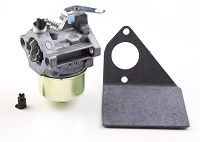The Black Ink Team's Guide To Carburetors
by Black Ink Team
Though it is a difficult word to spell, carburetors are simple to understand. Virtually extinct in the automotive and aviation worlds, carburetors are still very popular in outdoor power equipment and powersports engines. Their chief function is to mix and regulate the air and fuel that gets supplied to the cylinders. Fuel won’t combust unless it comes in contact with air, however too much air means a significant drop in performance – that is where carburetors come in.
Carburetors consist of several parts. First, there’s the fuel bowl. This is a small bulb which gathers fuel from the tank and stays at neutral pressure. It can’t be pressurized since that would cause too much fuel to reach the cylinders. The next part is the air horn. This is a fluted nozzle exposed to air which draws in air to the engine. After the airhorn is the venturi – a pinched cylinder with a nozzle in it. Thanks to the Bernoulli’s Principle, the air flowing through the airhorn and the venturi provides suction sufficient to pull fuel out of the fuel bowl at a rate proportional to the flow of air.

Briggs & Stratton’s Carburetor
In carbureted engines, the throttle does not control the amount of fuel that gets delivered to the cylinders. Instead, it controls the amount of air, by modulating how much air is allowed to be drawn through the carburetor. The alternative type of engine, fuel-injected, relies on fuel pumps to deliver fuel to the cylinders, one for each cylinder. There is a slight disadvantage to carburetors, in that they are unable to precisely meter out the same ration of air/fuel to each cylinder. However, with small engines and single-cylinder engines, carburetors make more sense because they are cheaper and less complicated. Another difference between carbureted and fuel-injected engines is that fuel-injected engines are easier to flood.
